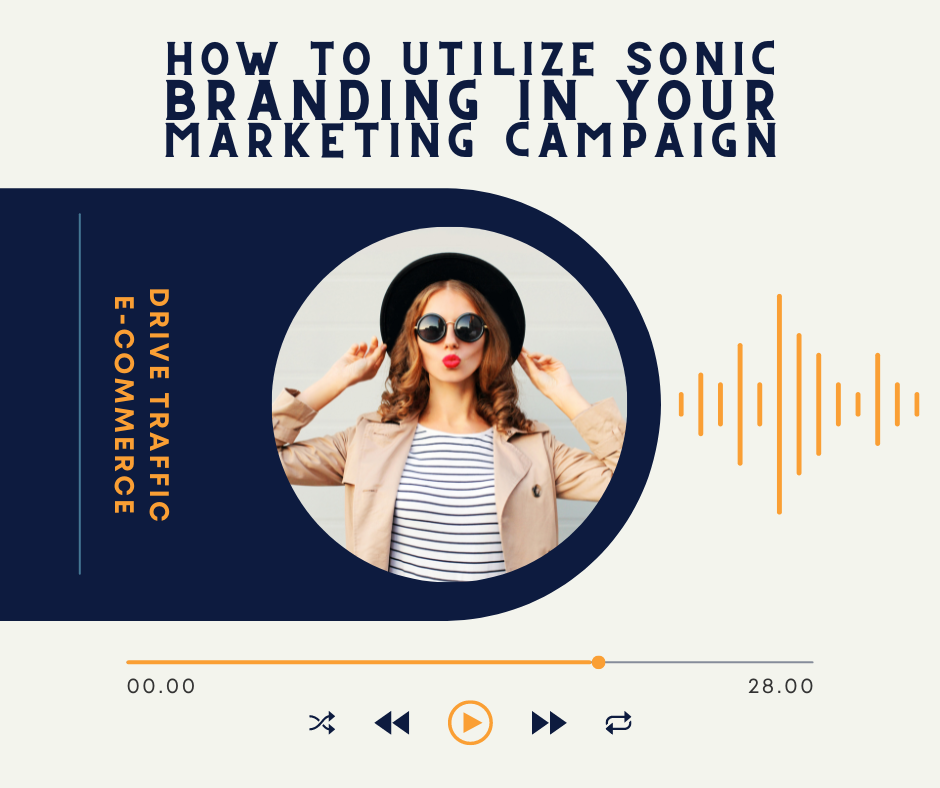Sonic branding is utilizing the power of sound in a marketing campaign. Much like how logos make people remember certain brands with their visual appeal, sonic branding makes brands more memorable by mere sound alone. It’s like coming across a random Britney Spears song on the radio and suddenly having the urge to go through her entire discography!
Why is Sonic Branding So Effective?
To understand why sonic branding is so effective, we must understand sound and its importance in our daily lives. It isn’t just something we hear—it’s something that involves all our senses! We feel worried and anxious when we hear police sirens, we see rain in our mind’s eye when we hear raindrops, we think of the fresh smell of popcorn when we hear kernels popping… sound is associated with everything we do!
With that said, many companies have already started using sound to create and maintain a brand image. It’s an easy way of getting your name out there without saying much at all. Below are some popular examples of sonic branding done right.
Some Examples of Sonic Branding
One notable example is Pepsi’s ‘The New Generation’ featuring Michael Jackson. In this ad, the lyrics to ‘Billie Jean’ were cleverly changed to suit the Pepsi style. With lyrics like, “You’re the Pepsi generation, guzzle down and taste the thrill of the day,” and Jackson’s signature groovy style, it’s no wonder that both the drink and the song gained immense popularity. To this day, people remember the advert and think fondly of the 80s era.
Another example that’s less flamboyant but still effective is Netflix’s starting sound. It lasts a few seconds and has no lyrics, but anybody can associate that iconic sound with the streaming platform or at least say, “Hey, where have I heard that before?”
Sometimes, sonic branding doesn’t even have to be musical notes! A person’s voice could be enough for sonic branding. For example, David Attenborough and Stephen Fry have long been associated with the British broadcasting channel BBC.
How Can I Use Sonic Branding Too?
Now that you’ve realized how useful sonic branding can be with some notable examples, it’s time to start coming up with sonic branding of your own. But where do we even begin?
1. Familiarize with Your Brand
According to a digital marketing agency in Los Angeles, the first step you need to take is to understand your brand. This will help develop a sound that complements and amplifies your image.
For example, if you’re a business that mainly sells children’s products or school supplies, you wouldn’t want to have a heavy metal sound with lots of cuss words now, would you? And if you were going for a more professional vibe, you wouldn’t want to have a wacky, mischievous kind of tone either.
So, think about the kinds of sounds you want to show off first and see if it fits with your brand.
2. Stick to What’s Comfortable
Sometimes, you don’t even have to look very far. You could already have been sonic branding unconsciously.
Think about stuff you’ve been adding in your videos or adverts: is there a particular way you say please or thank you? Are there any phrases or sentences you tend to say? Convert that to a slogan that’ll stick in your customer’s mind! The same goes for any music, sound effects, voiceovers, or any other recognizable sound.
3. Keep Things Simple
It’s important to keep things simple. For one thing, your customers’ attention spans probably aren’t that great. You really only have a few seconds to make a mark. Also, you don’t want to be too noisy either. While sonic branding is still pretty new in the marketing scene, you can’t deny there’s too much meaningless noise in the world.
4. Focus on Emotions
As we mentioned earlier, you want your customers to feel some type of way when they hear a sound associated with your brand. You can experiment with different genres (e.g., jazz, hip-hop), instruments (e.g., piano, drums), notes (e.g., major, minor), and plenty more.
Experimenting is important because this will help you come up with a sound that doesn’t already exist. At the end of the day, you want a sound that’s uniquely yours!
Conclusion
Just like an annoyingly catchy song you heard on the radio once, you want to use sound to be more memorable to people. It is a powerful tool that allows us to forge strong connections with our customers and establish brand loyalty.
